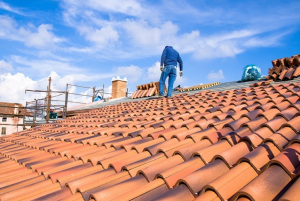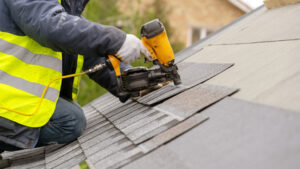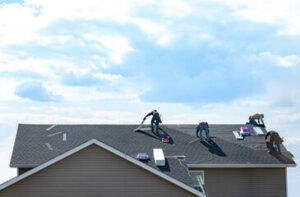A roof inspection is a proactive step to avoid costly repairs and extend the lifespan of the roof. It also ensures that the roof continues to protect the home.

Inspectors check for sagging areas, which could indicate structural problems. They also assess the condition of gutters, scuppers and drains. If these are clogged, water can build up and cause severe damage to the roof. Visit Our Website Here to learn more.
The roof flashing is a critical component of the overall condition of the roof system. Flashing is sheet metal fabricated to a specific shape, and it prevents moisture from penetrating areas of the roof that are prone to leaks. If enough water gets past the flashing, it can cause both cosmetic and structural damage to the roof. In addition, excessive moisture can lead to mold growth and other health issues inside the home. During a roof inspection, the inspector evaluates the flashing for any cracks or gaps and ensures that it is securely sealed.
The next step in the roof inspection process is evaluating the roofing materials. This involves looking for any signs of damage, including cracking, fading, curling or blistering. It is also important to evaluate the shingle type and age. This can give the inspector insight into how much longer the roof will last and when major repairs or replacement might be necessary.
It is also important to inspect the gutters and downspouts for any clogs or debris, as well as to make sure that they are properly channeling water away from the foundation. The inspector should also check the attic and ceilings for any water stains or signs of leaks. If the roof is old, the inspector should also look for any signs of wood rot or insect infestation.
If the roof is installed over a newer structure, it is essential to inspect the underlayment. This material protects the roof deck from moisture and insects, and it is critical to ensuring that the roof remains waterproof. Inspecting the underlayment can help identify any potential problems with the installation, as well as determine whether or not the warranty is still valid.
During the inspection, the inspector should also assess any other equipment present on the roof, such as pipes and vents. These items can also be a source of leaks and should be examined carefully for any cracks, rust or other signs of wear. The inspector should also make sure that all drains are functioning properly, and that the flashing around these areas is secure and intact.
Inspection of the Structure
If there are any structural issues with the roof, they need to be identified quickly and thoroughly. A complete inspection of the structure usually involves examining shingles and gutters, checking for leaks, and assessing other areas like chimneys, vents, and skylights. It is also important to check the condition of the attic, eaves, and supporting structures such as the roof decking. Inspectors also examine for signs of moisture damage, such as water stains or mold, and make sure the ventilation system is functioning properly.
To conduct a thorough inspection, it is helpful to have the right equipment and proper safety gear. It is also important to inspect the area in clear, dry conditions to avoid falling or getting hurt. If the roof is too steep or damaged to safely climb on, there are alternative methods available, such as using drones or infrared cameras. Finally, it is always a good idea to have someone accompany you to provide support and enhance safety.
Once all the exterior areas are inspected, it is time to turn your attention to the interior of the roof. Inspectors check the attic and eaves for any signs of sagging, bending, or stress. They also examine the condition of the roof decking and make sure the trusses and rafters are in good shape. They also look for any areas where the roof surface has been damaged, such as holes, and examine for a shingle tear or penetration. Inspectors also examine the flashing around chimneys, vents, and skylights to ensure it is intact.
If there are any areas of concern, the inspector should provide recommendations for repair and/or replacement. This can help the homeowner save money on future repairs, extend the lifespan of the roof, and increase the resale value of the home. In addition, regular inspections can prevent minor problems from escalating into costly, major ones. Additionally, many insurance policies and roofing warranties require routine inspections to remain valid. Having a documented history of maintenance can also help homeowners in case they ever need to submit an insurance claim or warranty application.
Inspection of Vents and Skylights
It’s a good idea for inspectors to get up on the roof if they can, especially to identify any problems that aren’t obvious. For example, hairline cracks or small defects in shingles may be difficult to see from the ground. Similarly, damp or rotted wood indicates long-term water infiltration that needs to be addressed. Inspectors should also look at the skylights, smoke and vent chimneys, projections or vents, and other features on the roof to make sure they’re in good condition.
For roofs that are difficult to access, inspectors can use specialized tools to get a closer look at problematic areas. This may include drones, which can capture high-quality images of hard-to-reach areas without putting anyone at risk. Infrared cameras are another tool that can detect temperature differences in the roofing materials, which can help identify hidden moisture and insulation issues.
Once the inspection is complete, the inspector will prepare a report for the homeowner. This should include photos of any damage or other areas of concern, as well as explanations of what they mean. The report should also list any recommendations for repairs or replacements that are needed. It’s important to note that identifying and addressing problems in the early stages can save homeowners money and prevent costly damage later on.
In addition to the main components of the roof, it’s also important to inspect the pipes and vents that run through the attic. These are often exposed to the elements and can suffer from rust or other damage over time. It’s essential to ensure that they’re not blocked, which can lead to water infiltration and mold growth. It’s also necessary to ensure that the vents are sized correctly to provide adequate ventilation and avoid overheating and condensation.
Inspection of the Materials
As the name implies, this portion of the roof inspection involves examining the materials on top of the deck. Inspectors look for signs of wear or deterioration. This includes examining the flashing, which seals joints and prevents water from seeping into vulnerable areas such as valleys and ridges. Inspectors also examine the shingles to determine their condition. Loose shingles, cracked shingle edges and other signs of aging or damage indicate the need for replacement.
Damaged Shingles
The next most common sign of a roofing problem is damaged shingles, which can be caused by heavy wind or other weather events. In addition, shingles can become brittle and crack or break from prolonged exposure to sun and temperature fluctuations. This type of damage is a major red flag and may void the warranty on the shingles and require a roof replacement.
Water Stains
The occurrence of water stains on ceilings and walls is another clear indication of roof damage or leaks. These stains are usually brown or yellowish in color and have a distinct ring-like shape. Inspectors also look for mold and mildew, which indicate a damp and poorly ventilated attic.
Other structural issues that inspectors check include a sagging roof, which can indicate problems with the deck or underlying structure. They inspect the gutter system, scuppers and drains to ensure they are free of debris and functioning properly. They also check for the presence of rust on pipes, vents and chimneys, as these can lead to leaks.
Recommendations
Once the inspection is complete, a professional roofer provides recommendations for repairs or improvements. This helps to protect the client from unwelcome surprises and save them money in the long run. It also demonstrates the professionalism of the roofing company and builds trust with the client.
In addition to reducing the risk of expensive roof repair or replacement, regular roofing inspections can help extend the lifespan of the roof. This can prevent significant damage that would otherwise require costly repair or even roof replacement. They can also help homeowners or building owners demonstrate the history of care and maintenance on the roof, which can increase property value.






